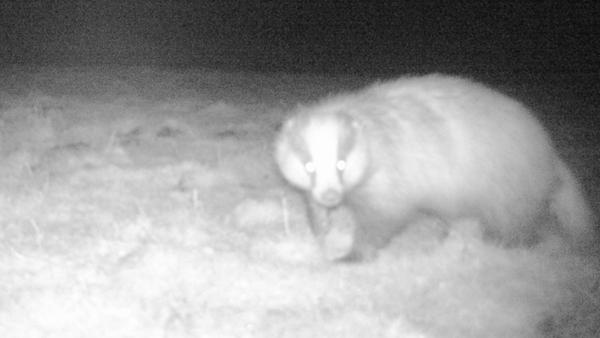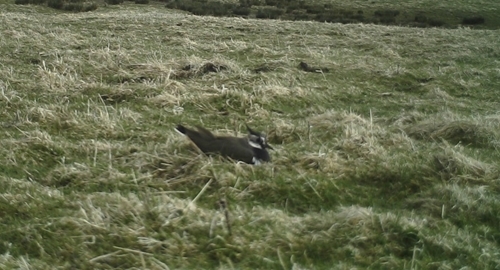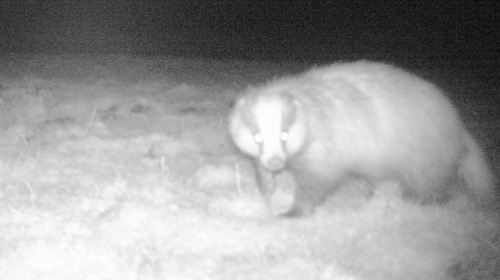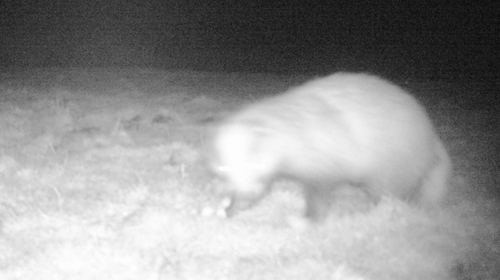
By Dave Parish, Head of Scottish Lowland Research
3 minute read
On 19th April I highlighted an increase in the number of lapwing clutches predated by badgers at Auchnerran. At the time our preliminary assessment suggested that approximately 66% of clutches had been taken, all in a very short space of time. Now, almost a month later, I can provide an update. This is still preliminary: a definitive summary will be provided at the end of the breeding season when we will be better able to put the findings in the context of previous years.
Overall, the proportion of lapwing clutches hatching has increased slightly, which is great news: of all lapwing clutches of known fate found so far (including replacements from earlier failed attempts), we estimate that 29% hatched and 50% have been predated, with the remainder lost to trampling by sheep or unknown causes. Of those predated clutches, we think 58% were taken by badgers (that is, about 29% of all clutches monitored so far this year).
Again, nest fate was assessed via trail cameras but also by investigating the remains left at nest sites. The latter approach is never perfect (hence why we have some clutches that we cannot attribute to an outcome), but when combined with evidence found at nests of known fate, like those we monitor with cameras, we can be reasonably confident in our conclusions.

Lapwing sitting on the nest

Badger looking at camera

Badger apparently scraping at nest contents with paw
It is important to remember that this approach is widely used by researchers around the world to estimate nest fate and it is only recently that technology has provided more accurate ways of recording activity at nest sites.
To date the oystercatcher and curlew nests monitored are all still active (having started a little later in the season than the lapwing) with no losses recorded.
As we are now more than halfway through the breeding season, it seems likely that the proportion of clutches predated by badgers – at least of lapwing – will be above average, given that no more than a few such events have been recorded previously in any one year.
Why has the predation rate been so high this year? Is it related to an increase in badger numbers or a switch in foraging behaviour? For example, the apparent reduction in badger predation rates of late is interesting and might be associated with the weather: several observers have noted badgers switching to other prey during prolonged dry weather when earthworms are less easily found – like earlier this year. Can predation of wader eggs be attributed to a small number of individual badgers? We can’t answer these questions yet, but we aim to investigate.
We have a database of badger activity at the farm from various surveys over the years that will be interrogated, which will quantify the perceived increase in badger activity over time. We will also work with our neighbours to determine the status of badgers in the wider landscape.
At Auchnerran, we have set up additional cameras all over the farm, including around the one sett that we host, to better understand badger numbers and movements – and to see if any individuals are identifiable. Alongside this we have set hair traps at strategic points known to be used by badgers: hair samples will allow us to identify individuals via genetic analyses in future, once we have raised the funds to do this.
We will also be keeping our eyes open for badger latrines so we can start to investigate diet and of course, we continue to monitor as many wader nests as possible via trail cameras and other methods. Whatever the findings, we will share them in due course.